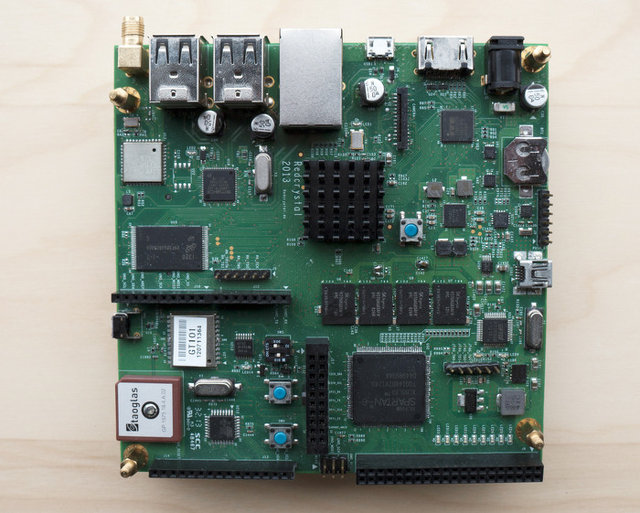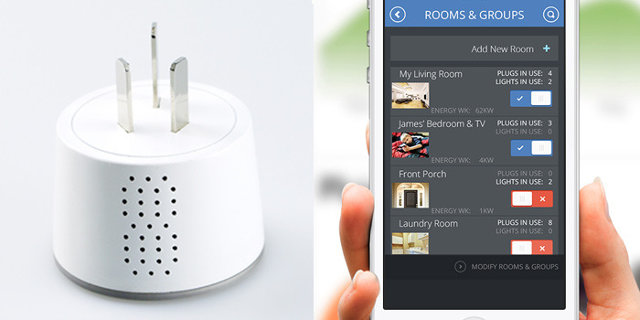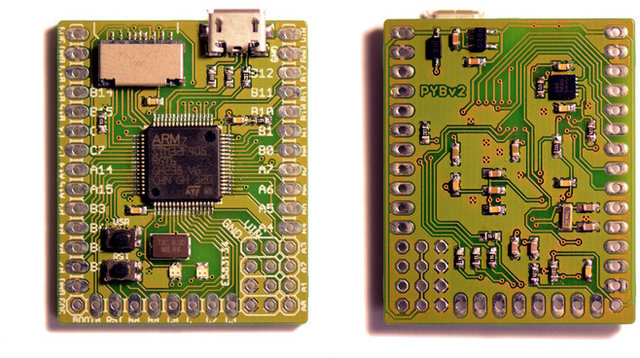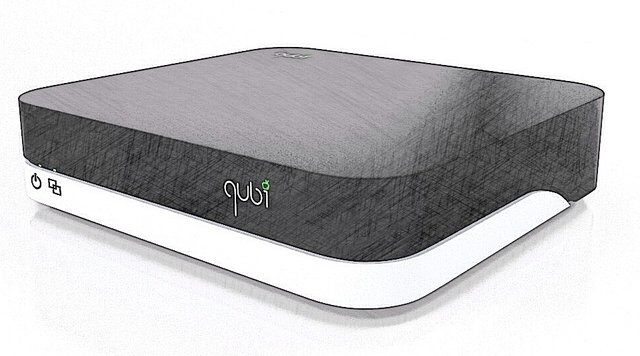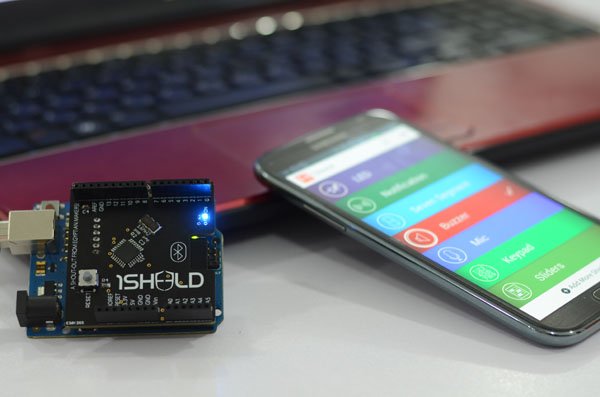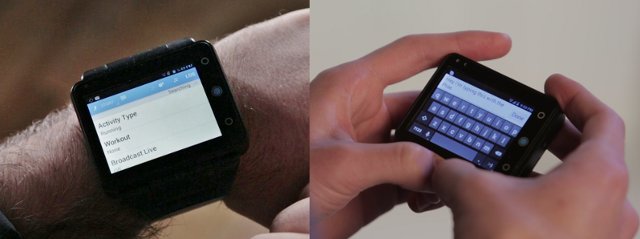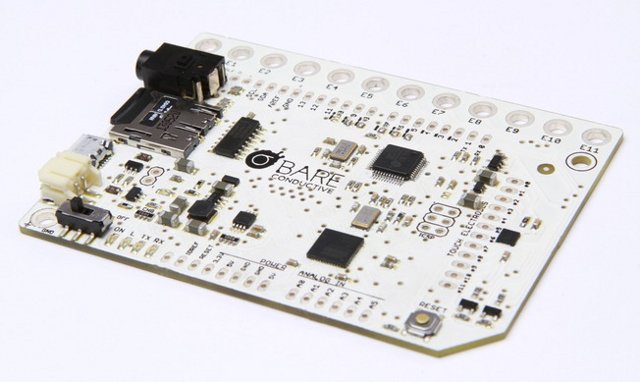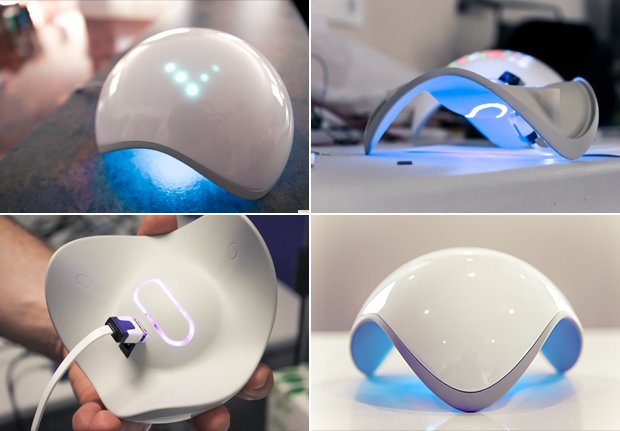Red Crystal, a German startup, has just introduced the Crystal Board, a 3-in-1 development board with Rockchip RK3188 SoC running Linux or Android, an Arduino UNO compatible board, and a Xilinx Spartan-6 FPGA. The concept is a similar to the UDOO board, but adds an FPGA. The company has launched a Kickstarter campaign to gather funds to manufacture the Lite and Pro versions of the board for respectively $149 and $179. Crystal Board specifications (Lite and Pro versions): SoC – Rockchip RK3188 ARM Cortex-A9 quad core up to 1.8Ghz + Mali-400 MP4 GPU MCU – Atmel Atmega328 SMD FPGA – Xilinx Spartan6 XC6SLX9 with 9152 logic cells System Memory – 2GB DDR3 @ 1066MHz (1GB DDR3 @ 1066MHz for Lite version) Storage – micro SD card slot, SPI flash Video Output – HDMI 1.4 Connectivity: 10/100M Ethernet port Wi-Fi 802.11b/g/n with antenna. Dual band for Pro version, 2.4GHz band for […]
$27 Plugaway Wi-Fi Smart Sockets Support Australia, China, Europe, U.K. or U.S. Standards (Crowdfunding)
Until now, Broadlink SP1 was the cheapest ($32) Wi-Fi smart socket I found. It supports Australian and Chinese plugs, and Android and iOS smartphones. The two main downsides is that the application is in Chinese by default (English can be installed via a firmware upgrade), and although the top of the socket support international plugs, the plug of the device only support Australian / Chinese standard, and you may need an adapter to connect the device to your wall socket. There’s now a similarly priced option in Kickstarter called Plugaway that supports Australia, China, Euro, U.K. or U.S. standards, can measure power consumption, dim lights, and comes with Android and iOS apps, with Windows planned for a future release. Specifications: MCU – Atmel ATmega128 up to 16MHz with 128 KB flash Wi-Fi – Marvell 88W8686 Wi-Fi 802.11 b/g chip, to be upgraded to support 802.11n for longer range Current sensor […]
Micro Python Brings Python to MCU Boards and Robots (Crowdfunding)
Micro Python is an implementation of the Python programming language, written from scratch and optimized to run on micro-controllers such as the ones based on ARM Cortex-M cores. Damien George, the developer, also designed the Micro Python board powered by STMicro STM32F405 Cortex M4 MCU for the purpose of running Micro Python. Even though in this project, the star of the show is not the board itself, as Micro Python will run on other platform once it’s open source, let’s have a look at the hardware specifications: MCU – STMicro STM32F405RG @ 168MHz with 1MB flash, 192KB RAM, and an FPU. External storage – Micro SD slot 30 general purpose I/O pins – 5 USARTs, 2SPIs, 2 I2C busses, 14 ADC pins, 2 DAC pins, 2CANs, and 4 servo ports with power. Built-in USB interface Misc – 4 LEDs, a user switch, a reset switch, a real-time clock, and a 3-axis […]
Qubi Android Media Center Features Qualcomm Snapdragon 600 SoC
Traditionally Qualcomm Application Processor have mostly been found in tablets, smartphones, and in development board such as the company’s own Mobile Development Platforms (MDP) or MyDragonBoard boards. But recently, a Snapdragon S4 has found its way into a smartwatch and today, I’ve found an upcoming, or maybe not, media player powered by Qualcomm Snapdragon 600. Beside Qualcomm quad core Krait SoC, Qubi Android media center features 2 GB RAM, 16 GB NAND Flash, dual band Wi-Fi b/g/n/ac, Gibabit Ethernet, and more. Here are the specifications of the device: SoC – Qualcomm Snapdragon 600 Quad Core Krait CPU @ 1.7 GHz with Adreno 320 GPU System Memory – 2GB RAM Storage – 16GB NAND Flash + microSD slot Connectivity – Dual band Wi-Fi b/g/n/ac, Gigabit Ethernet, and Bluetooth 4.0 Video Output – HDMI with HDMI-CEC support Audio Output – HDMI, optical SPDIF Video – 1080p video decoding USB – 3x USB […]
1Sheeld Arduino Shield Leverages Your Android Smartphone Hardware
To get started with Arduino, a simple board is enough, with soon, you’ll need to add shields for Wi-Fi, sensors, maybe a small display, etc.. and costs add up. Integreight, an Egyptian startup, had to idea to create a simple shield called 1Sheeld that can leverage your smartphone hardware assets such as Wi-Fi, LEDs, sensors, the display, the speaker, etc.., so you don’t have to spend extra money on shields. Technical Specifications: Runs on an ATmega162 @ 16 MHz Uses a standard HC-06 adapter (Bluetooth 2.0) providing up to 30 feet range (about 9 meters) Uses a modified version of the Firmata protocol Can communicate with Arduino using UART 50mA current draw That’s for the hardware, and there’s also a software platform and Android app to manages the communication between the shield and the smartphone, and select different shields options. You’d have to write your sketch using the company’s library, […]
Neptune Pine SmartWatch Phone Powered by Snapdragon S4 Dual Core Processor
More and more companies are jumping on the smartwatch bandwagon. Neptune Computer, a Canadian based startup, has just launched a Kickstarter campaign for the Pine, a watchphone running Android 4.1.2, and featuring a Qualcomm Snapdragon S4 dual core SoC. On the surface it looks very similar to SGPAX S5 smartwatch which also features a dual core processor (Mediatek MT6577), and a SIM card slot, and runs Android 4.0. Neptune Pine, however, comes with features and improvements which may make the 3 to 4 month “kickstarter wait” worth it: a larger 2.4″ detachable screen, larger internal storage, dual camera support, a larger battery providing up to 5 days in standby mode, and an IP67 rating that certifies the device to be dustproof and waterproof at depth of less than 1 meter. Neptune Pine specifications: SoC – Qualcomm Snapdragon S4 Dual-Core Processor @ 1.2Ghz System Memory – 512 MB RAM Storage – […]
Almost Anything Can Be A Touch Input with The Touch Board and Electric Paint
Bare Conductive, a British startup, has designed an Arduino Leonardo compatible board with 12 capacitive touch sensors called the Touch Board. You can basically use any conductive material as a touch sensor, but the company’s existing “electric paint” really makes the board come to life, and you can just draw circuit anywhere, be it on paper, your wall, cardboard, and create fun and useful applications. Touch Board specifications: MCU – Atmel ATMega32U4 Microprocessor @ 16 MHz with 32 KB of Flash Memory of which 4 KB is used for bootloader. External storage – MicroSD card slot I/Os: 20 digital I/O pins (3 used for Touch IC and 5 for MP3 IC – can be disabled) 7 PWM channels 12 analog input channels 12 Touch electrodes of which 8 can be configured as extra digital inputs or outputs with PWM capability. (via Freescale MPR121) Audio – Playback and MIDI support via […]
Ninja Sphere Home Automation and Monitoring Platform
Ninja Blocks is an company providing open source hardware solutions for home automation. Their first product was called Ninja Blocks Kit which includes a Ninja Block (Beaglebone + Arduino based gateway, but they now also support the Raspberry Pi), sensors, sockets, cables, and a power supply, and works with Ninja Platform, an open source software framework. The goal was to simplify the process of developing automation applications by taking care of all low levels tasks such as electronics, embedded programming, network protocols.., and letting “end users” / developers focus on their application. The company is now working on a new version called the Ninja Sphere, including a “Spheramid” gateway, location waypoints (Bluetooth low energy tags), and smart power sockets. Here are the key features of the gateway: Processor – ARM Cortex A8 (probably Texas Instruments Sitara) Color LED Matrix Connectivity – Bluetooth, Bluetooth LE, Zigbee, and Wi-Fi USB Port – […]


